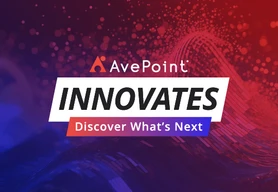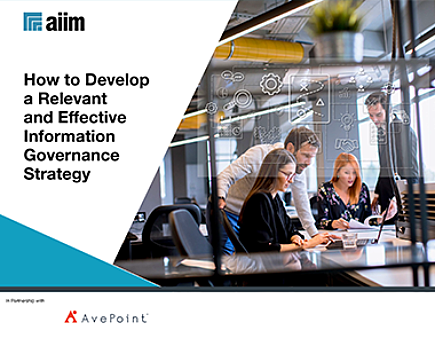How to Develop a Relevant and Effective Information Governance Strategy
Presented by AvePoint, in partnership with AIIM
Shifting information governance mindsets and methodologies
Business executives have long treated information governance as a cost of doing business and seemingly unconnected to strategic efforts around innovation and growth. Even the rising attention paid to personal data privacy and protection has largely failed to change the perception that information governance practices typically lack the ability to influence decisions around data-first and customer-first strategies over the long term.
In fact, recent AIIM research confirms that only 11% of employees enjoy the organization's and executives' full commitment and support.
The IIM practice and all the disciplines that comprise it have never been more important – but not for the reasons that some in our profession espouse. Despite a universal acknowledgement of the importance of digital transformation and the customer experience aspect thereof, our information management approaches don’t always lend themselves to support this single most important transformation driver.
Table of Contents
A Necessary Shift in Information Governance Mindsets and Methodologies
Developing your Proof Points for the “Why” of Governance
Know What You've Got
Automation is the Key Ingredient
Modernizing Your Infrastructure
It's Dynamic!
Conclusion
Take a sneak peek:
The guiding principle lies in not “selling” governance per se but rather describing the higher order objectives that executives care about that can be achieved through good governance. Successful IG pros now know that they must articulate the link between IG and customer experiences because that’s where the business value is most apparent. This means less of a focus on the “how” of governance when communicating with senior executives – they don’t care – and more of a focus on the specific benefits that a governance project will yield in terms of customer experience, timely information delivery, and better decision-making. (p. 4)
Organizations continue to tell us that they face the greatest challenges in dealing with information overload at the intersection of content and processes. They say that simply managing the documents and content necessary for knowledge workers to get their job done is a struggle. This is an ideal opportunity for IG professionals to solve this problem. Being able to bring data and information together is key to overcoming a siloed approach to the customer. (p. 6)
Unless governance can be made invisible, it will fail. Making governance invisible to the day-to-day knowledge worker is not a glamorous task, but a necessary one and one whose time has come. The key is the use of Machine Learning and Artificial Intelligence to automatically classify, extract, and enrich physical and digital content and data. This means software that can be trained to understand the meaning and the context of information, classify it into categories that cut across the traditional boundaries between content and data, and automatically apply governance categories and retention schedules. (p.7)
Effective information lifecycle management requires a fully focused approach rooted in customer-centered governance policies and procedures. From beginning to end, the entire information lifecycle must be considered in strategic planning. Process design efforts should include a cross-functional team that, along with IT, includes departments and stakeholders with an interest in how information is stored, used, and managed. Adoption of technologies and solutions should work to automate the governance process with tools that extend the value and effectiveness of information to boost organizational performance. (p.8)
More Similar Resources to Explore

Power Platform Governance For Copilot Studio Agents

AvePoint Innovates: Discover What's Next

7 Steps to Optimize Microsoft 365 Copilot Deployment

